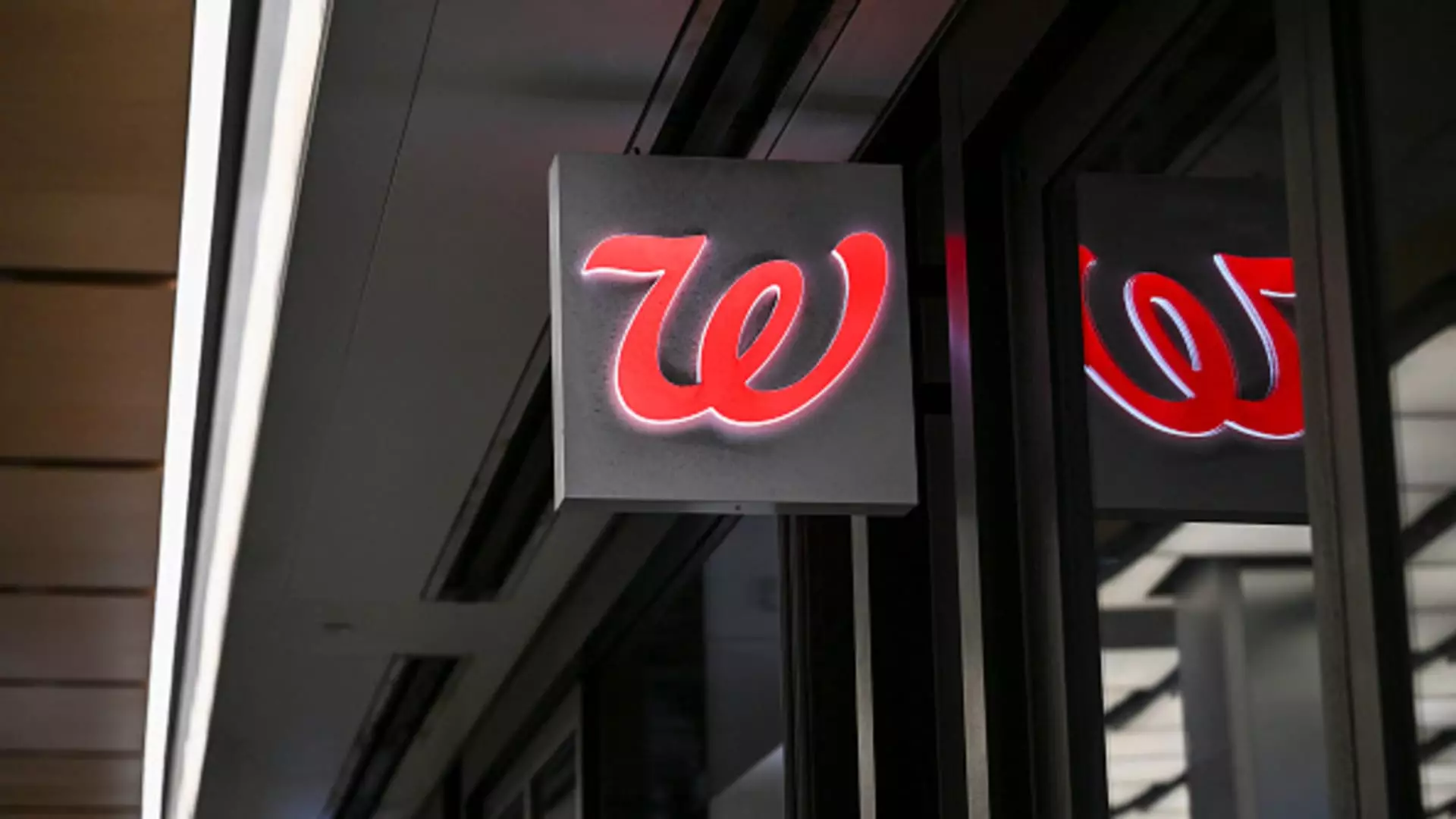Walgreens, a name that has symbolized community pharmacy for almost a century, now stands on the precipice of disappearing from public view. As the company embarks on a massive $10 billion deal with Sycamore Partners to become a private entity, it reflects not only a strategic maneuver but also a stark acknowledgment of the challenges that lie ahead. This historic move signals an end to the trials and tribulations that have marred Walgreens since its public inception in 1927, yet it raises crucial questions about the future of its role in healthcare and retail.
The company’s announcement of its fiscal second-quarter earnings delivers a mix of relief and concern, with results surpassing Wall Street forecasts. However, the figure that everyone is talking about is the net loss of $2.85 billion—a staggering indicator of the struggles that accompany this transition. As Walgreens grapples with plummeting consumer confidence, legal woes, and fierce competition from juggernauts like CVS and Amazon, the challenge of maintaining profitability while restructuring appears Herculean.
A Fragile Financial Recovery
For the three-month period ending February 28, Walgreens reported a revenue of $38.59 billion, which, while up 4.1% from last year, is mitigated by the stark reality of a net loss. CEO Tim Wentworth articulated this struggle, highlighting the company’s need for “enhanced focus” as it seeks to navigate the turbulent waters of a changing pharmacy landscape. Yet, how sustainable can this focus be when the ongoing legal settlements and operational disputes threaten to sap valuable resources?
The financial undercurrents at Walgreens are troubling. The opioid-related legal settlements that contributed to a staggering legal bill of $969 million reveal a company struggling to reconcile reputational damage with financial viability. Though Walgreens has announced a significant profit from cashing out early on investments, this appears more of a stopgap than a sustainable revenue model. While such financial maneuvers can provide a timely cash influx, they illustrate deeper issues in the company’s core operations.
A Dwindling Health Care Vision
Among its many issues, Walgreens faces a troubled approach to healthcare expansion. The emphasis on integrating retail pharmacy with health services—an initiative expected to position Walgreens as a leader in the evolving medical marketplace—has not yielded the anticipated results. The large additional charge of $4.2 billion tied to its investments in primary care clinic chains like VillageMD accentuates the internal conflict of being a healthcare provider while dealing with the operational chaos of retail pharmacy management.
What is more alarming is the sentiment that the company is out of its depth. In an industry where speed, technology, and consumer trust are paramount, Walgreens’ patchwork strategy appears misaligned with the realities of healthcare demand. One can’t help but question if the leadership at Walgreens truly grasps the magnitude of the shift required to transform the company, or if they are merely grasping at straws as looming competition and changing consumer behaviors render the traditional pharmacy model obsolete.
The Road to Becoming a Private Entity
The impending private acquisition by Sycamore Partners might seem like a financial lifeboat, yet it also poses dilemmas that cannot be ignored. Going private may offer temporary respite from shareholder pressures, allowing for a closer focus on long-term strategy rather than short-term gains. However, the reality is that such drastic measures reflect an underlying desperation. Walgreens risks losing its identity—not just as a publicly traded company, but as a community staple.
In a political and economic climate where the healthcare sector demands accountability and accessibility, Walgreens’ retreat from the public eye could exacerbate the very issues it seeks to resolve. Consumers, already skeptical of corporate monopolies, may start to view the exclusive show-run of private entities as one that caters to profit margins rather than patient needs. In striving to reconfigure itself, Walgreens must also ponder the loss of its public accountability, which might have safeguarded consumer interests during turbulent times.
As Walgreens embarks on this journey, the only certainty is that both the healthcare marketplace and the company itself will remain under intense scrutiny. Amidst the chaos of transformation, who will hold Walgreens accountable as it reshapes its identity away from public influence? The stakes are undeniably high, and as this once-beloved institution attempts to redefine itself, the broader implications for its legacy remain unsettlingly unclear.

